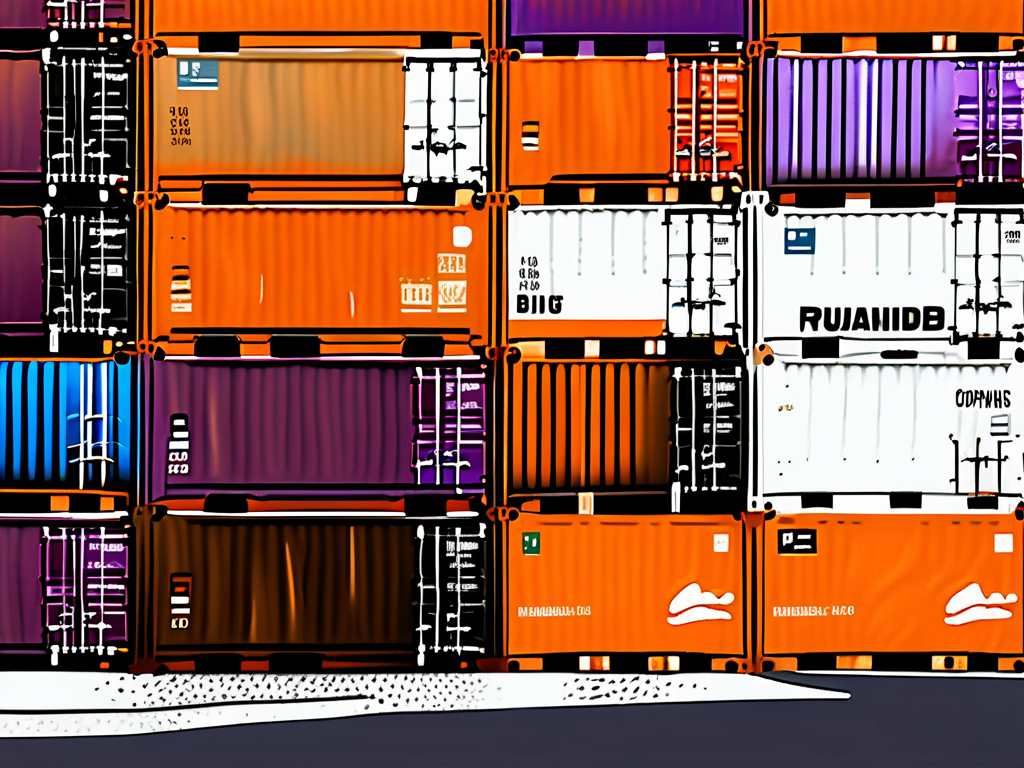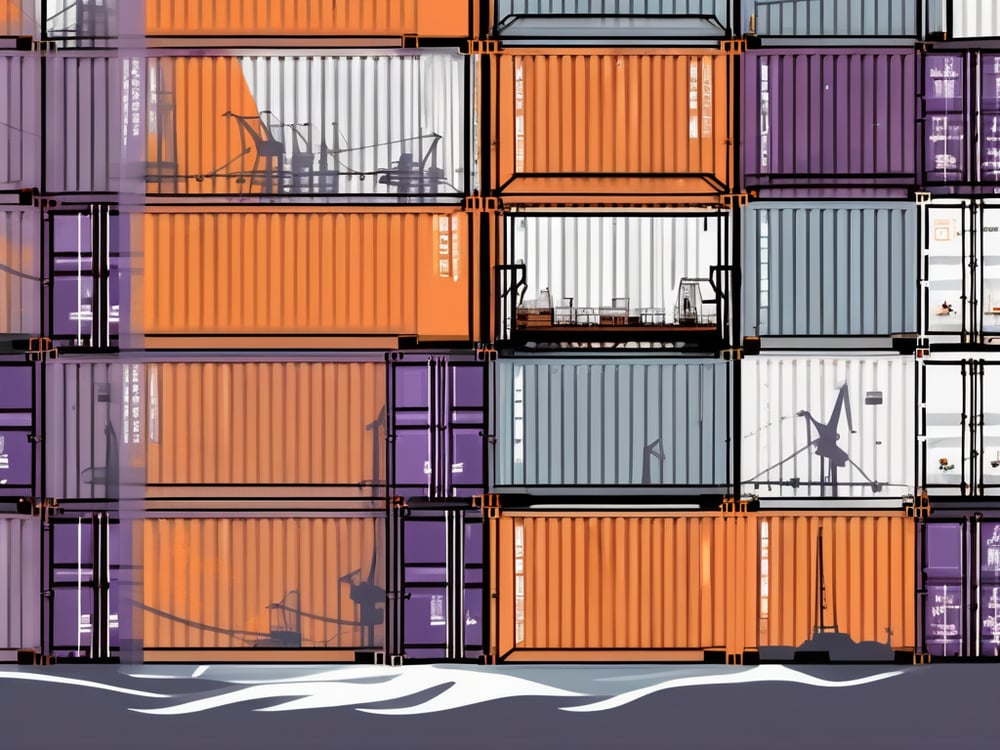The average lifespan of a shipping container is influenced by several factors including material, usage, environmental exposure, and maintenance. These sturdy steel structures that transport goods around the world have a relatively short lifespan.
But why is that? Let’s find out. In this article, we will dive into:
- The factors that influence the lifespan of a shipping container,
- The role of maintenance in extending its lifespan,
- The effects of environmental conditions,
- And even explore the possibilities of repurposing and recycling these containers.
So, let’s get started!
Table of Contents
ToggleDurability and Life Expectancy of Shipping Containers Explained

Shipping containers typically last between 10 to 12 years during active sea transport according to industry standards. However, with proper maintenance, their lifespan can extend significantly.
For containers not in heavy use, such as those repurposed for storage, the average lifespan can range from 25 to 30 years. If they are well-maintained and modified for construction or other uses, they can last even longer, with some reports suggesting a potential lifespan of up to 50 years for well-cared-for units.
Dry Van Containers:
- Most common type, used frequently for various cargoes.
- Shorter lifespan due to wear and tear from constant loading and unloading.
Refrigerated Containers (Reefers):
- Designed for perishable goods with advanced refrigeration systems.
- Slightly longer lifespan due to specialized design and careful maintenance for temperature control.
Flat Rack Containers:
- Used for oversized or heavy cargoes.
- Shorter lifespan due to higher stresses from weight and size of cargo.
- Can be repurposed for other applications after retirement from shipping use, potentially extending lifespan.
In conclusion, the lifespan of a shipping container is influenced by various factors, including the quality of materials used, design and construction, handling and maintenance practices, and the type of container.
By understanding these factors and implementing proper care and maintenance, shipping containers can be utilized for extended periods, ensuring the efficient and safe transportation of goods.
Factors that Impact the Lifespan of a Shipping Container
When it comes to understanding the lifespan of a shipping container, several factors come into play. These factors can significantly impact how long a container can remain in service. Let’s take a closer look at some of the key ones:
Quality of the Container
- Importance of high-quality steel for durability and longevity.
- Corrosion resistance to withstand harsh transportation conditions.
- Impact of container design and construction, including sealing mechanisms.
- Reinforced corners and double-locking systems for added strength and security.
Handling and Maintenance
- Proper handling during loading and unloading to prevent damage.
- Regular inspections to identify and fix issues early.
- Routine maintenance to prolong container life.
Operating Environment
- Effect of extreme weather conditions, such as humidity, heat, or cold.
- Benefits of storing in controlled environments to avoid weather-related wear and tear.
Types of Maintenance for Shipping Containers
Maintenance, both basic and specialized, plays a crucial role in prolonging the lifespan of a shipping container. By following a few maintenance tips, container owners can significantly extend their containers’ life and preserve their structural integrity. Let’s explore some of these maintenance practices in detail:
- Regular maintenance is essential for ensuring that shipping containers remain in optimal condition for as long as possible.
- Basic maintenance tasks, such as inspecting the container for damage, keeping it clean, and applying rust-resistant coatings, can go a long way in preventing corrosion and structural issues.
However, specialized maintenance, including repairs to the container’s locking mechanisms and seals, is also crucial for ensuring its longevity. You need to:
- Regularly inspect the container for any signs of damage, such as dents, rust, or leaks.
- Keep the container clean and free from debris, as dirt and grime can accelerate corrosion.
- Apply rust-resistant coatings or paints to protect the container from the elements.
- Ensure that the container is properly sealed to prevent water ingress.
- Inspect and maintain the locking mechanisms to ensure they are functioning correctly.
Proper maintenance not only extends the lifespan of shipping containers but also ensures the safety of their contents during transportation.
By following a regular maintenance schedule and addressing any issues promptly, container owners can avoid costly repairs and potential accidents.
The Impact of Neglect on Container Lifespan
Neglecting proper maintenance practices can have dire consequences on the lifespan of a shipping container. A container that is left exposed to harsh weather conditions without regular inspections and necessary repairs is likely to deteriorate more rapidly.
This neglect can lead to structural weaknesses, compromising the container’s integrity and potentially causing accidents during transportation. So, it’s crucial to provide the necessary care and attention to ensure a longer lifespan for these containers.
The Effects of Environmental Conditions on Container Lifespan
Environmental conditions, including weather and location, have a significant impact on the lifespan of shipping containers. Let’s take a closer look at how these conditions can influence a container’s longevity:
How Weather Conditions Affect Shipping Containers
Shipping containers are designed to withstand harsh conditions at sea, but the elements can still take their toll over time. Exposure to extreme temperatures, heavy rain, snow, and saltwater can accelerate corrosion and deterioration of the container’s exterior, leading to reduced lifespan.
Containers located in regions with high humidity or close to industrial areas may also experience increased wear and tear due to environmental factors.
Moreover, severe weather events such as hurricanes, typhoons, or cyclones can pose a significant threat to shipping containers.
The force of strong winds and flying debris can cause structural damage and compromise the integrity of the container, reducing its lifespan considerably. Proper reinforcement and strategic placement of containers can help mitigate the risks associated with extreme weather conditions.
The Impact of Location on Container Lifespan
The location where a shipping container is stored or used can significantly affect its lifespan. Containers situated in coastal areas or areas with high levels of air pollution are more prone to corrosion and degradation.
Additionally, containers stored in direct sunlight for extended periods can experience thermal stress, resulting in warping or weakening of the structure. It’s important to consider the location carefully when determining the expected lifespan of a shipping container.
Furthermore, proximity to bodies of water, such as oceans or lakes, can introduce additional challenges for container longevity. The presence of salt in the air near coastal regions can accelerate the corrosion process, leading to rust formation and structural weaknesses.
Regular maintenance and protective coatings can help extend the lifespan of containers in these environments by providing an extra layer of defense against corrosive elements.
Repurposing and Recycling Shipping Containers
Instead of disposing of shipping containers after they reach the end of their lifespan for shipping purposes, there are ways to give them a second life. Repurposing and recycling containers not only help extend their lifespan but also contribute to sustainable practices. Let’s explore these options:
Extending the Lifespan of a Shipping Container through Repurposing
Shipping containers can be repurposed for various applications, such as:
- modular housing
- offices
- art installations
- and even swimming pools
By repurposing these containers, their lifespan can be extended, and their environmental impact can be reduced. This creative approach not only provides cost-effective solutions but also promotes sustainable living.
Repurposing shipping containers for modular housing involves transforming them into livable spaces by adding insulation, windows, doors, and other amenities.
These repurposed containers offer a unique and modern living experience while reducing construction waste and the need for traditional building materials. The versatility of shipping containers allows for customizable designs and layouts, catering to different housing needs and preferences.
The Process of Recycling Shipping Containers
When a shipping container is no longer suitable for use, it can be recycled to recover the valuable steel and other materials. The recycling process involves dismantling the container, separating the different components, and melting down the steel for reuse in various industries.
Recycling shipping containers helps reduce the demand for new steel production, conserves resources, and minimizes waste.
Recycling shipping containers not only provides a sustainable solution for dealing with retired containers but also contributes to the circular economy. The recycled steel from these containers can be used in the construction, automotive, and manufacturing industries, reducing the environmental impact of producing new steel.
Additionally, repurposing containers for other purposes like storage units or pop-up shops before recycling them further extends their usability and sustainability.
The Future of Shipping Containers
As we look to the future, innovative solutions are being developed to increase the lifespan of shipping containers and make them even more sustainable. Let’s take a glance at some of these exciting developments:
Innovations to Increase Shipping Container Lifespan
Researchers and engineers are continuously exploring new ways to enhance shipping container design and construction. This includes the use of advanced materials, improved rust-proofing techniques, and better insulation to protect against the elements.
These innovations aim to increase container lifespan, reduce maintenance requirements, and ultimately create a more sustainable shipping industry.
One interesting development in shipping container design is the incorporation of self-healing materials. These materials have the ability to repair small cracks and damages on their own, without the need for human intervention.
By integrating self-healing technology into the container’s structure, the lifespan of the container can be significantly extended, reducing the need for frequent repairs and replacements.
The Sustainability of Shipping Containers in the Long Run
Shipping containers have already proven to be a valuable asset when it comes to transporting goods efficiently around the world. With ongoing advancements and a growing focus on sustainability, these containers are expected to continue playing a vital role in the global logistics industry for years to come.
By embracing new technologies and sustainable practices, shipping containers can become an even more environmentally friendly and long-lasting solution.
One exciting development in the sustainability of shipping containers is the integration of renewable energy sources. Imagine a shipping container equipped with solar panels on its roof, harnessing the power of the sun to generate electricity for its own operations.
This not only reduces the container’s carbon footprint but also makes it more self-sufficient, potentially allowing it to operate in remote areas without relying on external power sources.
By converting containers into controlled environment agriculture systems, it becomes possible to grow fresh produce in urban areas, reducing the need for long-distance transportation and minimizing food waste.
This innovative approach not only promotes sustainability but also contributes to food security in densely populated regions.
Regular Maintenance Can Prolong the Lifespan of Shipping Containers
This concludes our exploration of the lifespan of shipping containers. From understanding the factors that influence their longevity to the importance of maintenance and the potential of repurposing, we’ve covered a wide range of topics.
Now, the next time you see a shipping container, you’ll have a deeper appreciation for its lifespan and the possibilities it holds beyond its initial purpose.






